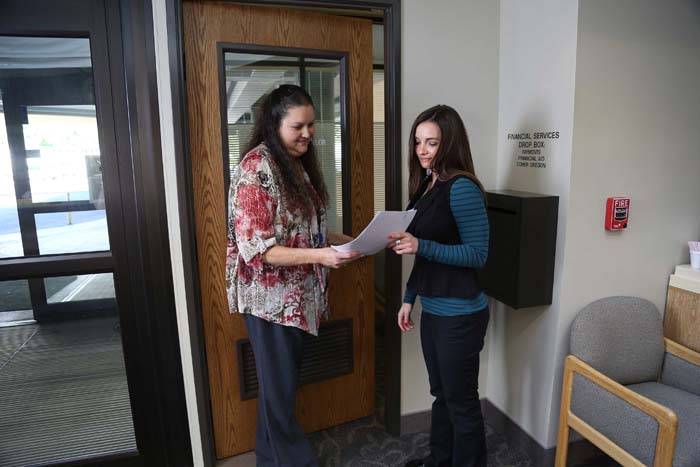Knowing the cost of health care
Published 7:30 am Saturday, June 25, 2016

- Grande Ronde Hospital Financial Counselor Teresa Leddon-Minch, left, and director of business services Karli Wright review paperwork at their office at the hospital. (Courtesy photo)
Union County patients who want to plan ahead financially for an elected outpatient procedure at Grande Ronde Hospital or one of its clinics will find that a lot easier to do now. They can receive a good-faith price estimate for those services within a few business days by simply calling the hospital at 541-963-2845.
This kind of price transparency is the ultimate goal of an Oregon initiative launched in Spring 2015, designed to drive hospitals to set standards for providing financial and billing information.
To measure the progress made in this initiative, the Oregon Association of Hospitals and Health Systems conducted a study of 62 Oregon hospitals and the results showed that “Grande Ronde Hospital is ahead of many of Oregon’s hospitals in service estimate cost, price transparency and billing practices.”
According to OAHHS secret shopper survey results released in May, Grande Ronde Hospital was one of only four hospitals in the state that met all Tier 1 standards in full.
Tier 1 standards were adopted by all Oregon hospitals last year and are based upon recommendations by the national Healthcare Financial Management Association in their Price Transparency Task Force Report.
Oregon hospitals were among the first in the nation to voluntarily adopt these recommendations on price and quality transparency.
These standards include good-faith estimates given upon request for all scheduled services, excluding lab and radiology; estimates with all applicable disclaimers; and patient applicability, financial assistance availability and financial assistance information on the hospital’s website.
Grande Ronde Hospital leads the way because it has been providing services estimates to self-pay, out-of-network and insured patients for scheduled procedures for several years, said Karli Wright, director of business services at GRH.
“We have always been proponents of price transparency and go out of our way to ensure we understand our patient’s insurance benefits, so we are able to effectively assist them in navigating the financial side of healthcare,” Wright said.
In all practical terms, patients are retail consumers of health care products and services.
With the legal obligation for every American to be insured, studies show that more than one in five with private insurance is enrolled in a high deductible health plan — what some refer to as a major-medical policy. According to a 2014 Kaiser Family Foundation survey of health care benefits, “61 percent of employees in small firms and 41 percent of workers overall have a deductible over $1,000.”
Beyond the deductible, many insurance policies require the patient-consumer to make a co-pay contribution toward their health care costs until they reach their policy’s dictated out-of-pocket maximum. For some, depending on the cost sharing ratio, that figure could be in excess of $20,000 per year.
There are many variables involved in shopping for the best health care prices. A colonoscopy, for example, that averages $2,500 in U.S. hospitals, may result in the patient contributing $750 to $1,200 of that to satisfy their insurance’s deductible. Then add in another 20 percent of the balance for a co-pay and the patient may need to pay out as much as $1,500 for the entire procedure.
However, some policies may cover wellness checks and pay 100 percent of procedures like colonoscopies. Consequently, patient-consumers need to review their Medicare and/or private insurance policies to see what’s covered and what is not and how out-of-network health care is covered. Policies vary widely.
This type of information may be obtained from staff at the GRH patient financial services department by calling 541-963-2845. Staff will help the patient determine whether or not their insurance benefits will cover certain services, and if so, how much will be covered and what the estimated costs and co-payments will be for the procedure in question.
The more a patient can learn in advance of the procedure date, the better the patient can budget financially and plan ahead to covering the costs of scheduled healthcare.
“We provide these patients with an estimate of costs to be incurred, an understanding of their insurance benefits and discuss out-of-pocket expenses,” Wright said. “Our goal is to expand this service to all scheduled services in the next few years.”

